Diseases and pests of nasturtium
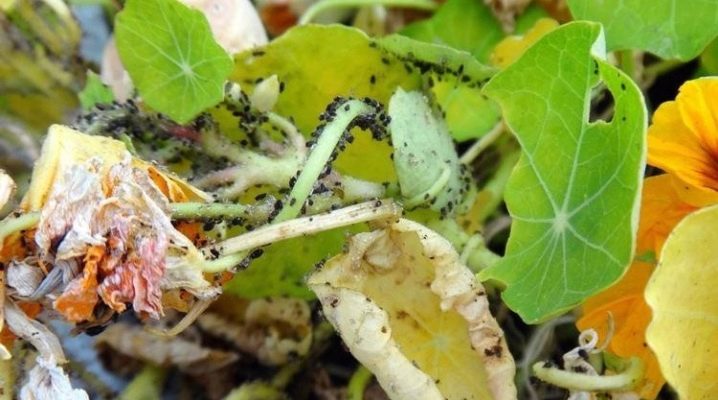
Flower garden decoration is in great demand due to the wide variety of plants that can decorate any site. These include nasturtiums, which originate in Central America.
However, no flower is immune from diseases and pests, so it is important to study the peculiarities of growing and care in order not to face similar problems. Your attention is invited to a description of various diseases of nasturtium, the consequences of pests and methods of dealing with the problem.
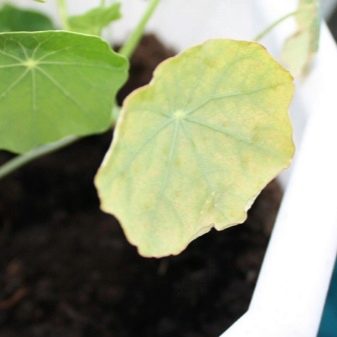
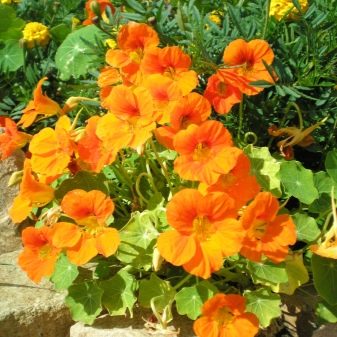
Diseases and their treatment
It is safe to say that nasturtium belongs to the plants that can be found in any summer cottage. These flowers are distinguished by their brightness and long-term flowering, lasting until September. Nasturtium is a tremulous plant that requires careful maintenance. Various infections and diseases can quickly harm, so it is important to know how to avoid negative consequences. It is a thermophilic plant that needs favorable conditions. If the climate is temperate, the capuchin will only grow a carpet for one year. Such greenery has an attractive appearance, therefore, it will decorate the curb, gazebo and plot.
Nasturtiums can be affected by certain diseases, so symptoms need to be recognized early in order to immediately begin treatment. For example, if the plant no longer blooms, it is most likely due to the wrong location. In the open field, the flower must be planted in a sunny place. It is important to choose the right fertilizers: feeding with nitrogen contributes to the growth of green mass, but there will be no more flowers from this. If the soil is too wet and the temperature drops sharply, the plant will feel uncomfortable and will not bloom.
Thus, experts recommend abandoning fertilizing containing nitrogen, and the bushes should be grown in an open space where there is enough sun. To prevent hypothermia, it is better to use covering materials. If you are growing a flower on your balcony, make sure it has enough room for the buds to form, so bulky pots are best. Leaves of any plant turn yellow. This is a natural process, but if it started in the middle of the season, it indicates a problem.
Watch for water on the leaves. The presence of liquid on the foliage leads to burns on the plates. Watering should be carried out at the root and in the late afternoon.
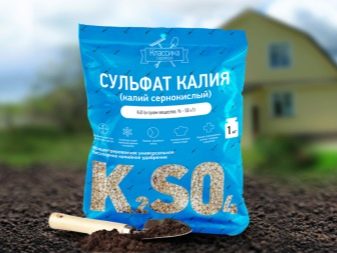
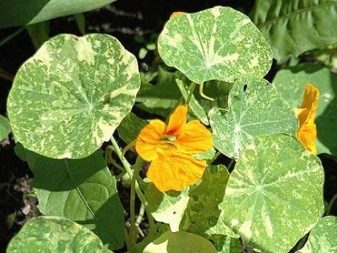
If the soil is poor, it is necessary to use complex fertilizers, including potassium, phosphorus and other useful elements. There is such a disease as mosaic, which is also accompanied by yellow leaves. In this case, the diseased foliage must be removed, and the plant itself will have to be treated with Karbofos.
Sometimes the leaves can turn gray or white, such spots indicate an attack of rot. With such a problem, Bordeaux liquid, Mikosan or Fundazol will be the best helpers. If the plates began to curl, then this indicates bacterial wilting, which is a dangerous disease. Infected bushes must be removed so that the lesion does not spread to healthy plants. Otherwise, such an ailment cannot be treated; preventive measures must be followed.
Gray rot appears as dry patches that cover the stem and leaves. This happens due to excess moisture.In this case, you will also need to remove the infected branches and treat everything with fungicides. As for bacterial wilting, it begins to affect the bottom of the plant and spreads over the entire flower. Weeds act as intermediaries, so it is extremely important to clean the area. If dots with a red border are found on the leaves and they begin to grow, they must be removed. Rust can also attack nasturtium, causing the plant to die. Treatment consists in removing diseased leaves and using bacterial preparations, fungicides. The soil can also be cultivated to prevent the spread of the disease.
In order for the plant to be beautiful and less affected by diseases, it is important to observe the planting time. This should be done in warm but cloudy weather or in the evening so that young roots do not suffer.
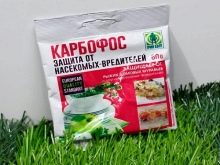
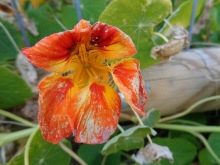
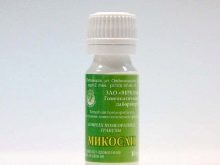
Common pests
Various midges and caterpillars eat plants. You can get rid of them by various means, including folk ones. It is necessary to use chemicals according to the instructions, and you can process both the soil and the bush itself.
- Aphid. Nasturtium is a relative of cabbage with radishes, so aphid attacks are common. It is not difficult to notice black aphids, they settle on the back of the leaves and take all the juice from the plant. If yellow spots appear on the surface, and the stem has become lethargic, it is necessary to urgently resort to safety measures. You can fight aphids as follows. You will need ordinary ash, which must be scattered on the plants, having previously sifted through a sieve. If the weather is rainy, the procedure must be repeated after precipitation. Also, herbal infusions with a pungent smell help well against aphids. This can be wormwood, for example. And also gardeners often use infusions of garlic and onions. Single insects can be knocked down with a stream of warm water.
- Cabbage moth. This pest eats the leaves, after which it begins to lay larvae in the shoots. If there is cabbage on the site, it is better to plant the flower away from it. The first step is to destroy the weeds, and then regularly spray the plants with soapy water or preparations. Any insecticide with a general range of effects will do.
- Spider mite. This is a small insect that is not easy to see on nasturtium bushes. The mite emerges from the soil in early May and begins to precipitate young seedlings of various plants. If on the back side you see a thinly woven cobweb or black spots, this means that the flower is affected by a pest that multiplies quickly. The insect does not tolerate alcohol, so it will be enough to treat the plant with this substance or choose a suitable chemical preparation.
- Belyanka. This is a butterfly that may seem innocent in appearance, but in fact it poses a real threat to plants. The larvae harm the flower, eating absolutely everything along the way. To destroy the consequences and the very cause, it is necessary to use insecticides. Some experts breed a wasp beetle, which eats the white beetle and its larvae.
If you have an infusion of tomato or potato tops, you can water the plants with them.
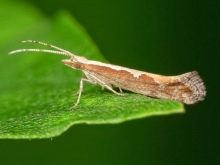
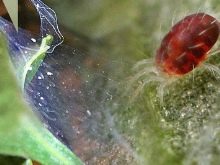

Prevention measures
It is pleasant to have a plant such as a capuchin on your site, because it decorates the territory and does not require special conditions. The main task of any owner is proper care, but even if the bush is sick, it can be treated if you know a few of the rules described above. However, it is possible to prevent such consequences, because there are preventive measures that will help to cope with the task at hand. The first rule is planting healthy material. Make sure the plant is in excellent condition initially, especially if you are replanting it. Experts recommend disinfecting the earth every spring, this will require a solution of copper sulfate, and boiling water with potassium permanganate can replace it. As for planting recommendations, nasturtium is planted in loose soil on the sunny side.Watering must be done abundantly, but infrequently, so as not to overmoisten the soil.
If there is no need, it is better not to transplant the bushes from one place to another: the culture has a delicate root system that is easy to injure. Top dressing plays an important role, and this is not only about Capuchin - this applies to all plants. Fertilization is carried out in accordance with the season; the fertilizing should contain phosphorus and potassium. It is possible to save any plant in the garden from pests, but it is better to do prevention, it will take less time and effort. To prevent fungus, use a solution that requires just a few drops of iodine and water. Loosening the soil before planting plays an important role. Nasturtium differs from other crops in that it does not need organic fertilizers, which only harm and prevent the flowering period.
Thus, if you want to enjoy flowers all summer long until late autumn, you need to carefully monitor and care for the soil, control the moisture level.
Make sure the land is fertile for amazing results.
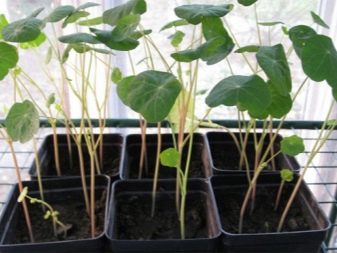
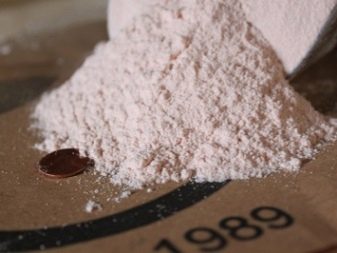






































































































The comment was sent successfully.